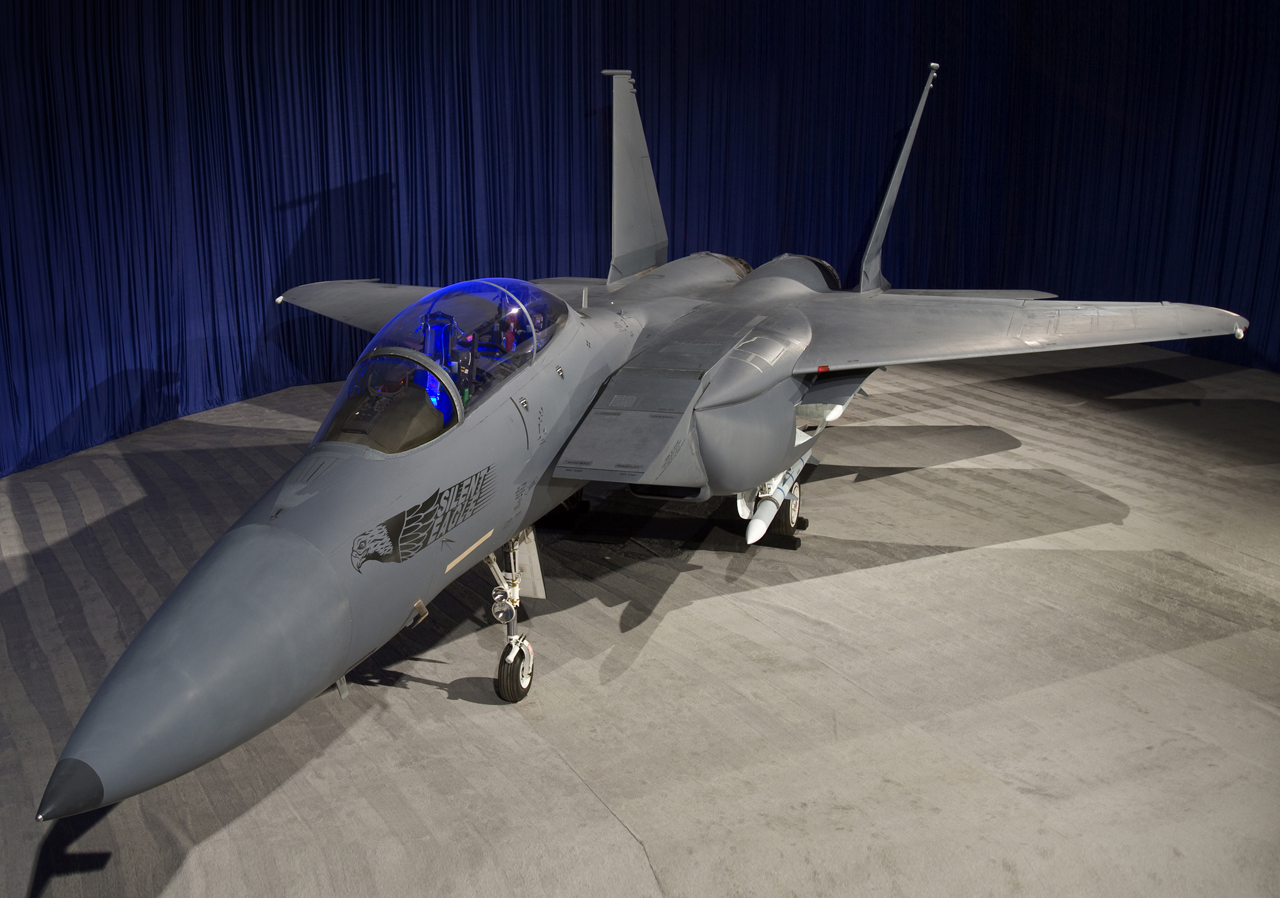ahmedfire the first aircraft is exactly the proposed modification to Super Hornet offered to India and ,obviously it
has NOT any type of internal weapon bay, but,as explained, it has only a central weapons bay, supposedly less observable than the same weapons it host when suspended on the pylons .
The second aircraft in your photo is a proposed modification to F-15 , it
has NOTHING to do with "Silent Hornet"
but you agree with me that SH or SE has lower than SU-35S, didn't u ?
Not, i don't agree absolutely ; both aircraft in fact have a
frontal RCS in a figure low enough that the weapon carried will define mainly theirs effective RCS.
u agree with me that this is an advantage in air - air combat , didn't u ?
Obviously not .What
can represent an advantage is ,at limit the capability to track a particular aircraft before it track you ; or ,even more important , being capable to track a particular enemy before the opposite at a range where you can attempt an engagement with one of your weapon systems.
Silent Hornet would be still tracked much, much, much, earlier by the SU-35's Irbis than the opposite, simply because its airframe is almost equal and its central weapon bay could, at most, reduce of some square meters the effective RCS .
Moreover in typical many vs many air engagements against data-sharing aircraft (as those expected in conflicts between peer/near-peer opponents), with inbound enemy radar wave's coming from literally hundreds of very different inception angles, the effective RCS would be even some order of magnitude greater than that usually cited (for sensationalistic PR purposes) for the perfect Head-on angle .
Even for a VLO aircraft in those engagement the effective average area of diffraction will not be inferior to 0,3 -0,4 square meters , very ,
very far from the merely academic RCS figures for supercritical narrow angles in a perfect co-planar head-on aspect so often ...and at blunder....cited.
if RCS is not that importance ( except in 5th gen with stealthy design, ), why US going on projects like silent eagle ,silent hornet ( if produced) and F-35 with internal weapon bays to reduce the aircraft's radar cross section ?
But it represent an advantage and also a strong one, the point is simply that this advantage ,in
reality is
VERY DIFFERENT from the laughable ideas and scenarios circulating commonly on those subjects.
Low/Very Low Observability provide an huge
TACTICAL and POSITIONAL advantage over the enemy to the aircraft with similar a design ,
it don't allow absolutely to a similar aircraft to travel over an head-on vector of interception toward a group of modern data sharing enemy aircraft remaining undetected before entering in the effective range of its missiles


.
When someone refer to the capability of a similar aircraft to destroy the enemy without being seen ,it don't lie, but refer to the possibility , eventually ,for a VLO aircraft to exploit its tracking range advantage to effectively
turn around the covering angle of the enemy radar's footprint , gaining so the capability to attack it from its blind angles ; it represent the exploitation of an huge positional tactical advantage ,this advantageous potential is diluted enormously at the growing of the number of the enemy networked aircraft and theirs positioning at particular angles in the three dimensions.









 AlfaT8
AlfaT8